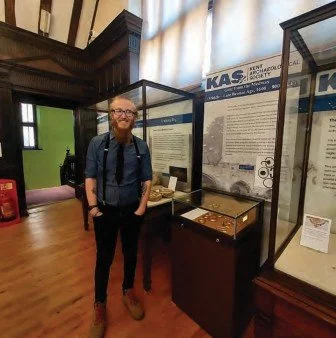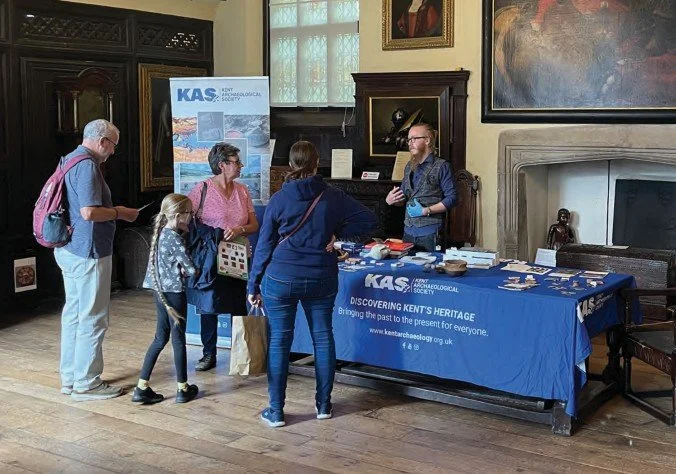Kerry Brown, 2023, KAS Magazine, Issue 120 (Summer 2023), Maidstone: Kent Archaeological Society.
KAS Magazine, Issue 120 (Summer 2023), Maidstone: Kent Archaeological Society.
Keith Parfitt, Chair of Fieldwork Committee, 2023, KAS Magazine, Issue 120 (Summer 2023), Maidstone: Kent Archaeological Society.
KAS Magazine, Issue 120 (Summer 2023), Maidstone: Kent Archaeological Society.
Paul Tritton, 2023, KAS Magazine, Issue 120 (Summer 2023), Maidstone: Kent Archaeological Society.
Andy Ward, 2023, KAS Curator, KAS Magazine, Issue 120 (Summer 2023), Maidstone: Kent Archaeological Society.
KAS Magazine, Issue 120 (Summer 2023), Maidstone: Kent Archaeological Society.
Frank Beresford, 2023, KAS Magazine, Issue 120 (Summer 2023), Maidstone: Kent Archaeological Society.
KAS Magazine, Issue 120 (Summer 2023), Maidstone: Kent Archaeological Society.
Wayne Perkins, 2023, KAS Magazine, Issue 120 (Summer 2023), Maidstone: Kent Archaeological Society.
Henny Shotter, 2023, KAS Magazine, Issue 120 (Summer 2023), Maidstone: Kent Archaeological Society.
KAS Magazine, Issue 120 (Summer 2023), Maidstone: Kent Archaeological Society.
KAS Magazine, Issue 120 (Summer 2023), Maidstone: Kent Archaeological Society.
David Steed, 2023, KAS Magazine, Issue 120 (Summer 2023), Maidstone: Kent Archaeological Society.
Richard Taylor & Keith Parfitt, 2023, KAS Magazine, Issue 120 (Summer 2023), Maidstone: Kent Archaeological Society.














Richard Taylor, 2023, KAS Magazine, Issue 120 (Summer 2023), Maidstone: Kent Archaeological Society.